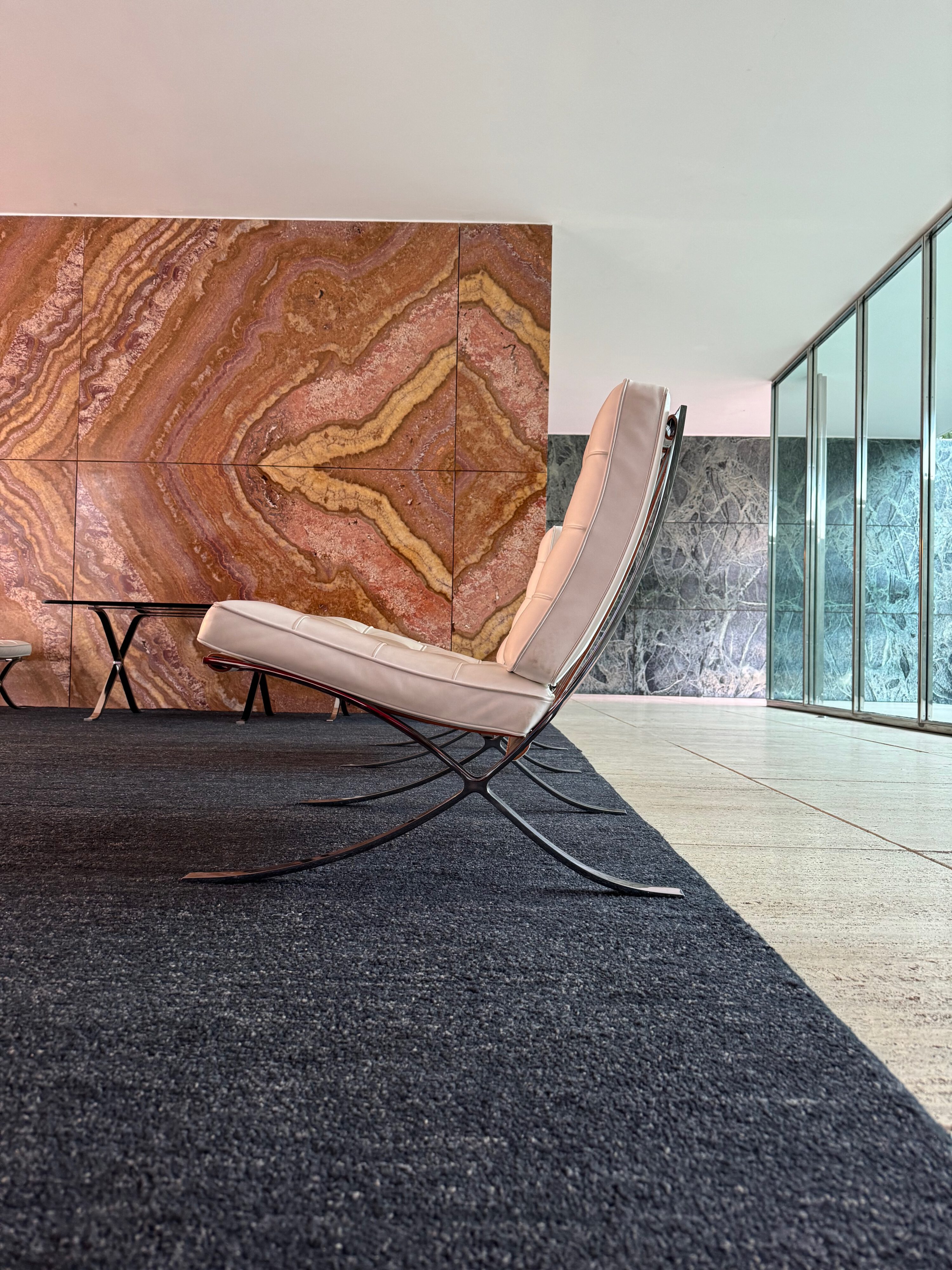
The Pavelló Mies van der Rohe, also known as the Barcelona Pavilion, is a masterpiece of modernist architecture designed by the renowned architect Ludwig Mies van der Rohe. Situated in Barcelona’s Montjuïc district, the Pavilion is a significant architectural landmark for several reasons:
Iconic Design: The Barcelona Pavilion is celebrated for its minimalist design and innovative use of materials. Mies van der Rohe’s design principles of “less is more” and “God is in the details” are exemplified in the Pavilion’s clean lines, open plan, and exquisite craftsmanship.
Spatial Composition: The Pavilion is composed of a series of interconnected spaces, including a central courtyard, a reflective pool, and a glass-walled pavilion. These spatial arrangements create a sense of fluidity and openness, blurring the boundaries between indoor and outdoor spaces.


Material Innovation: Mies van der Rohe utilized cutting-edge materials such as steel, glass, and marble in the construction of the Pavilion. The use of transparent glass walls and cantilevered roof slabs demonstrates his mastery of structural engineering and material expression.
Cultural Significance: The Barcelona Pavilion was originally built as the German Pavilion for the 1929 International Exposition in Barcelona. It was intended to showcase Germany’s architectural and technological achievements and served as a symbol of modernity and progress.
Historical Context: The Pavilion’s construction marked a pivotal moment in architectural history, representing the transition from the decorative excesses of the early 20th century to the sleek modernist aesthetic that would define the rest of the century. Its influence can be seen in countless architectural works worldwide.
Artistic Legacy: The Barcelona Pavilion is considered one of Mies van der Rohe’s most significant works and a masterpiece of modernist architecture. Its timeless elegance and spatial clarity continue to inspire architects, designers, and artists to this day.


Cultural Programming: In addition to its architectural significance, the Pavilion hosts exhibitions, events, and cultural programming that celebrate modern art, architecture, and design. Visitors have the opportunity to engage with contemporary artistic practices while experiencing the Pavilion’s architectural splendor.
Overall, the Pavelló Mies van der Rohe is worth visiting for its architectural beauty, historical importance, and cultural resonance. Whether you’re an architecture enthusiast, a design aficionado, or simply appreciate timeless elegance, the Pavilion offers a captivating glimpse into the evolution of modernist architecture.


One Reply to “Pavelló Mies Van Der Rohe”
Comments are closed.